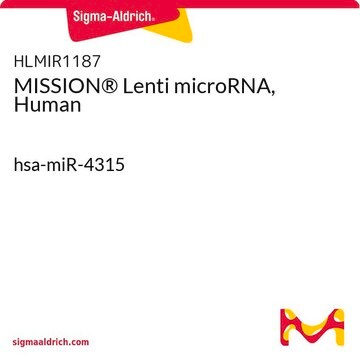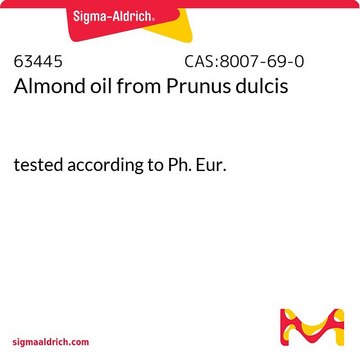W530119
Almond oil, sweet
Certified organic (NOP)
Synonym(s):
Almond oil from Prunus dulcis, Almond oil, sweet
About This Item
Fragrance grade
Halal
Kosher
Recommended Products
grade
Certified organic (NOP)
Fragrance grade
Halal
Kosher
Quality Level
Agency
follows IFRA guidelines
reg. compliance
EU Regulation 1223/2009
origin
Kenya origin
refractive index
n20/D 1.471
density
0.910 g/mL at 25 °C
application(s)
flavors and fragrances
Documentation
see Safety & Documentation for available documents
food allergen
tree nuts
fragrance allergen
no known allergens
Organoleptic
almond
Looking for similar products? Visit Product Comparison Guide
General description
Legal Information
Storage Class Code
12 - Non Combustible Liquids
WGK
WGK 2
Flash Point(F)
Not applicable
Flash Point(C)
Not applicable
Personal Protective Equipment
Choose from one of the most recent versions:
Certificates of Analysis (COA)
Don't see the Right Version?
If you require a particular version, you can look up a specific certificate by the Lot or Batch number.
Already Own This Product?
Find documentation for the products that you have recently purchased in the Document Library.
Our team of scientists has experience in all areas of research including Life Science, Material Science, Chemical Synthesis, Chromatography, Analytical and many others.
Contact Technical Service







